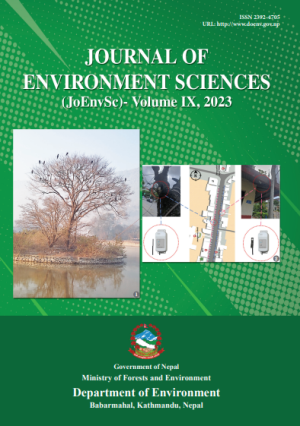Relation between Modis-based Aerosol Optical Depth and Particulate Matter in Kathmandu using Regression Model
DOI:
https://doi.org/10.3126/jes.v9i1.56417Keywords:
Multivariate Linear Regression, PM-AOD Relationship, Regression ModelAbstract
Ambient fine Particulate Matters have been linked to various adverse health outcomes. Exposure to the high level of such particles would increase the risk of premature death, especially for people with weak immune systems, such as children and elder people. This research derives the relation between particulate matter and AOD from the Regression model on the seasonal (Pre-monsoon season (March 2020) and winter season (December 2019) basis of Kathmandu. Here two models have been developed one linear single-variable regression model and the other multivariable regression model. For the multivariable regression model, meteorological factors like Wind speed, Temperature, and Relative Humidity were adopted from the underground and the Planetary boundary layer height was simulated from WRF. Particulate matter (PM2.5) was adopted from the US Embassy air quality station and MODIS Level 2 AOD having 10 km resolution was analyzed for regression modeling. The linear single variable and linear multivariable regression model were developed seasonally one from December 1st to December 31st, 2019 (winter season) and the other from March 1st to March 31st, 2020 (Pre-monsoon season) using Python. The seasonal correlation coefficient of these two models was obtained. In both seasons, the multivariable linear regression model showed a good correlation between AOD and Particulate Matter R2 (Pre-monsoon) = 0.72657, R2 (winter) = 0.4687) compared to the single variable regression model having R2 (Pre-monsoon) = 0.45, R2 (winter) = 0.133). In both these regression models using the evaluated regression coefficients, two seasonal equations were derived from which Particulate Matter can be estimated.




